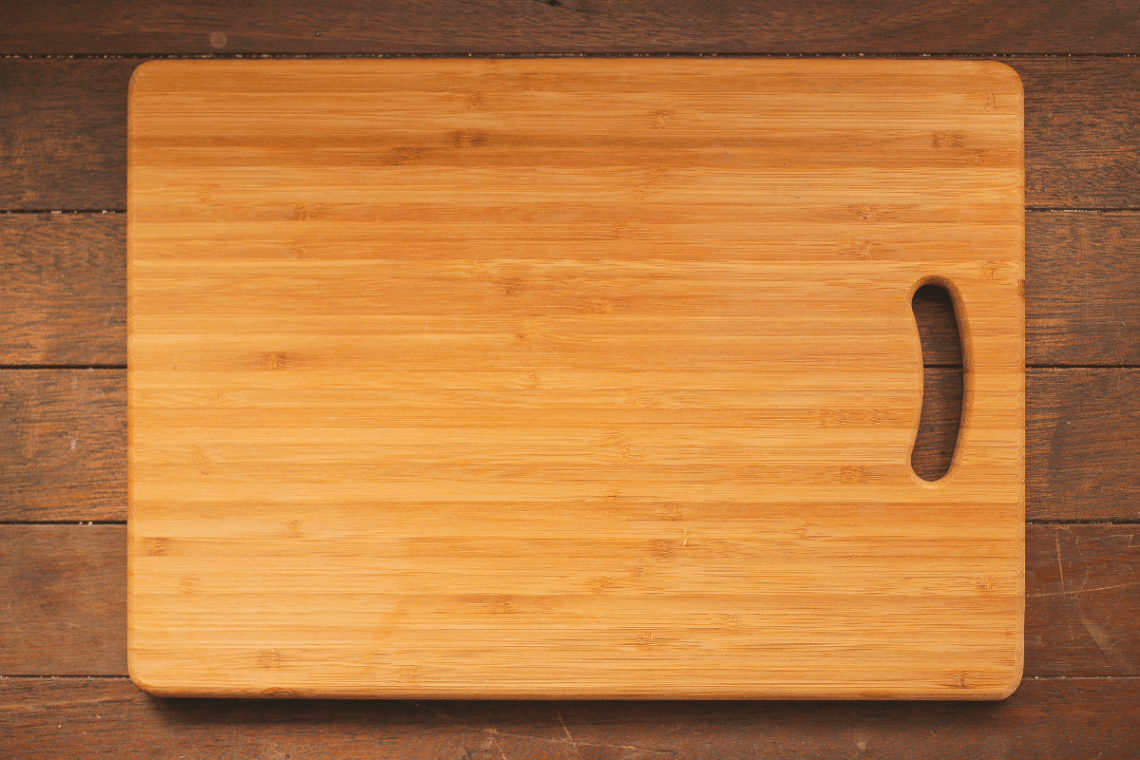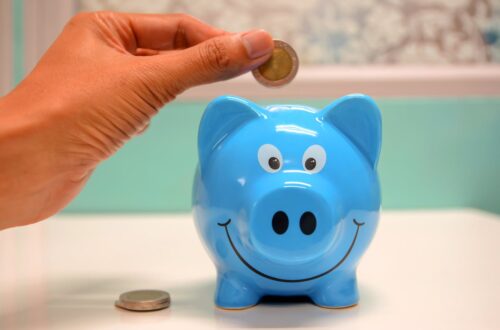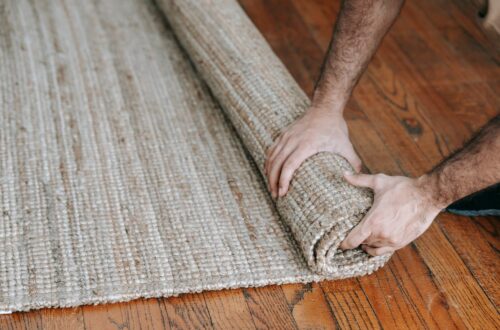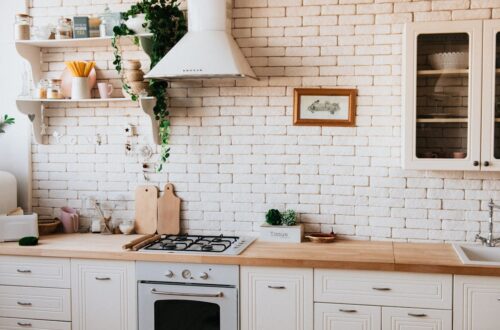Your Cutting Board Might Be Dirtier Than Your Toilet Seat!
Yes, you read that right. Studies have shown that the average kitchen cutting board can host up to 200% more fecal bacteria than a toilet seat, especially when it’s used for raw meat and not cleaned properly.
Now imagine this: You’re prepping fresh salad veggies right after dicing raw chicken, thinking a quick rinse will do the trick. We’ve all done it. But that habit could be inviting harmful bacteria like E. coli and Salmonella right into your dinner.
This brings us to today’s hot (and hygienic) topic: how to clean your cutting board without harsh chemicals. Because who wants bleach near their food prep zone?
Why Avoid Harsh Chemicals?
While bleach and heavy-duty disinfectants might kill germs, they also leave behind residues you probably don’t want in your food. Plus, they can damage wooden cutting boards and are often unsafe for kids or pets.
More and more Canadians are seeking non-toxic, eco-friendly cleaning alternatives that are safe for food surfaces and still get the job done. Choosing gentler methods isn’t just about being environmentally conscious—it’s about preserving your tools and protecting your body.
Your kitchen is where health begins, and the tools you use should reflect that priority. Using harsh cleaning agents on cutting boards can also wear them down faster, leading to cracks and splinters that harbor more bacteria and require frequent replacement.
Let’s break down natural methods that can clean, sanitize, and deodorize your cutting board effectively—whether it’s wood, plastic, bamboo, or composite.
Step-by-Step: How to Naturally Clean a Wooden Cutting Board
Wooden boards are durable and beautiful, but they also absorb moisture and bacteria if not cleaned properly. Here’s a safe and effective cleaning process:
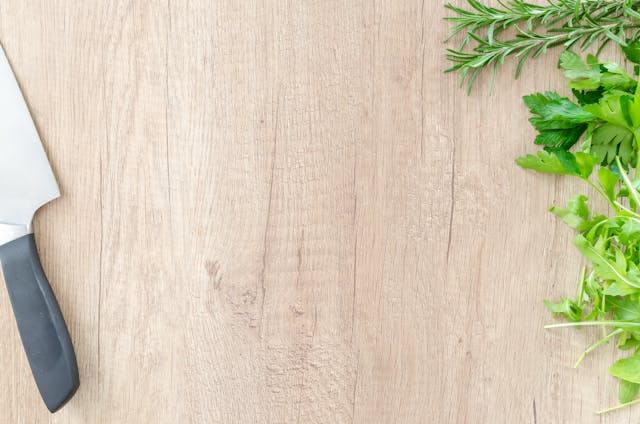
1. Start with Hot Water and Scrubbing
After every use, rinse your board with hot water and scrub it with a brush or sponge. Skip the soap if it’s heavily fragranced—you don’t want it soaking in. A quick rinse might feel sufficient, but invisible germs can linger.
2. Deodorize with Baking Soda + Vinegar
Sprinkle baking soda across the board. Then spray white vinegar over it until it fizzes. Let it sit for a few minutes, scrub gently, and rinse. This helps lift smells and stains, and the reaction between vinegar and baking soda naturally breaks down grime.
3. Sanitize with Lemon and Salt
Cut a lemon in half, sprinkle coarse sea salt on the board, and scrub with the lemon flesh. Not only does it smell amazing, but lemon is also antibacterial and leaves a nice finish. This method doubles as both cleaner and polish.
4. Dry Thoroughly
Never leave wooden boards wet. Dry upright with good air circulation. Moisture is a breeding ground for mold. Wipe with a clean towel and let it air dry completely.
5. Re-oil Monthly
Every few weeks, rub your board with food-grade mineral oil or beeswax to seal the wood and prevent cracks. This step maintains the board’s longevity and helps it resist future stains and odors.
You’ll notice a visible difference in both texture and scent after natural cleaning—your board will feel refreshed and look revitalized.
How to Clean Plastic Cutting Boards Without Harsh Chemicals
Plastic boards are easier to disinfect but more prone to deep knife grooves where bacteria can hide. These grooves can make it harder for surface cleaners to penetrate and truly sanitize.
1. Rinse and Scrub with Dish Soap + Water
Use hot water and unscented dish soap. A scrub brush will get into the crevices better than a sponge. It’s important to scrub thoroughly after cutting raw meat, fish, or poultry.
2. Hydrogen Peroxide Soak
To naturally disinfect, soak the board in 3% hydrogen peroxide for 10 minutes. It’s safer than bleach and just as effective. Rinse thoroughly afterward to remove any remaining residue.
3. Baking Soda + Water Paste
Make a paste and apply it to stained areas. Let it sit for 10-15 minutes before scrubbing. This is great for tackling tomato or beet stains that often linger on plastic.
4. Sunlight Cure
Place your plastic board in direct sunlight for an hour. UV rays are a natural disinfectant. Bonus: sunlight also helps remove lingering odors.
If your board has deep grooves or permanent stains, consider sanding it lightly or using it exclusively for dry goods.
Deep-Cleaning a Bamboo or Composite Cutting Board
Bamboo is more water-resistant than traditional wood, but it still needs care to prevent mold and splitting. Composite boards, on the other hand, are engineered for durability but still benefit from routine maintenance.
Bamboo Care Tips:
- No soaking! Bamboo boards warp easily.
- Wipe clean with white vinegar or lemon juice.
- Use a baking soda paste for deeper stains.
- Oil monthly with coconut oil or mineral oil to maintain its condition.
Composite Board Care Tips:
- Hand wash when possible to prolong life.
- Use lemon or vinegar-based wipes after raw meat.
- Dry vertically or on a rack to maintain airflow.
These boards often look sleek and modern, but they require just as much love to stay clean and safe. Natural cleaning preserves their quality and aesthetic.
Stats That Might Make You Rethink That “Quick Rinse”
- According to the NSF International (a global public health org), 18% of cutting boards tested in home kitchens had E. coli.
- A 2023 Canadian Food Safety Report found that over 60% of home cooks reuse boards without fully cleaning them between raw and cooked food.
- Health Canada recommends using separate cutting boards for meat and produce to avoid cross-contamination.
These numbers should act as a wake-up call. Cleaning isn’t just about aesthetics—it’s a matter of safety. With regular natural cleaning, you can avoid contamination and improve food hygiene.
Bonus Tips to Keep Your Cutting Board Fresh
- Avoid the dishwasher for wooden or bamboo boards. Heat can crack and warp them, leaving them unusable.
- Don’t let liquids pool. Always store your board standing up or in a vertical rack to drain excess moisture.
- Check for deep cuts. If your board has grooves too deep to clean, it may be time to retire it or reserve it for non-food use.
- Rotate your cutting boards. Use different ones for meat, veggies, and bread to reduce cross-contamination risk.
- Try tea tree oil as a natural sanitizer. Dilute it in water and spray lightly on boards between uses.
- Avoid using strong essential oils directly. While they smell nice, not all are food-safe without dilution.
These maintenance habits, combined with natural cleaning, can extend the life of your board and keep your food safer in the long run.
Clean Smart, Cook Safe
Learning how to clean your cutting board without harsh chemicals isn’t just about eco-consciousness. It’s about safeguarding your health and the flavor of your food. Whether you’re working with wood, plastic, or bamboo, natural methods like vinegar, lemon, and baking soda can sanitize effectively without putting your meals at risk.
Natural cleaning methods preserve your board’s surface, eliminate harmful bacteria, and avoid chemical residues near your food. Plus, they’re budget-friendly and align with sustainable kitchen practices.
The good news? You probably already have most of these ingredients at home. It’s simple, sustainable, and smart.
By choosing non-toxic methods, you’re keeping your kitchen healthier and your meals safer—without a trace of bleach.
So the next time you wonder how to clean your cutting board without harsh chemicals, remember: it’s not just a chore—it’s a daily ritual of care and awareness. Make cleaning part of your cooking flow, and let every meal begin with a fresh, naturally sanitized surface.
Your board—and your body—will thank you.
